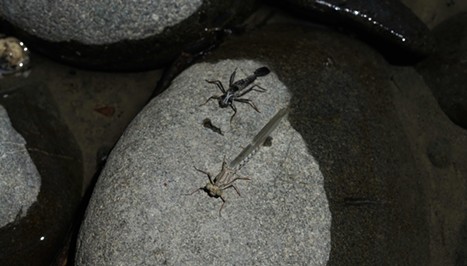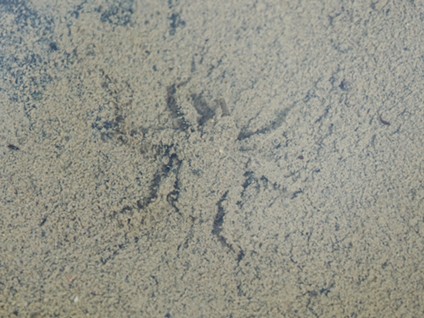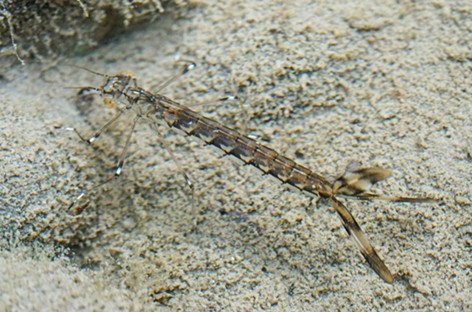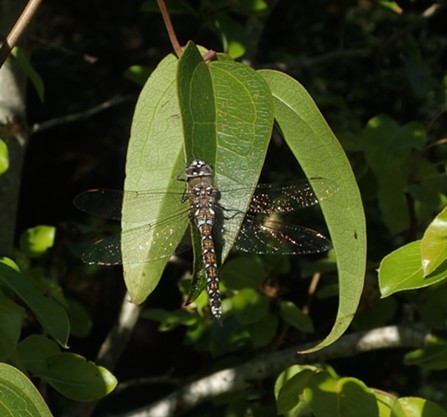News Blog

- Anthony Westkamper
- A damselfly having left its old skin behind as it emerged from the water. This one is still soft and uncolored.
One of the most remarkable things about many insects is their ability to completely change their lifestyles through the process of metamorphosis.
Like us, the most primitive insects start out as small copies of their adult parents. Their lifestyle will be the same throughout their entire lives as to where they live, what they eat and how they react to stimuli. The silverfish, and bristletails, are of this group.
Next up the evolutionary tree are creatures that start life as small copies of the adults, but lacking one distinguishing characteristic: wings. There are a great many insect species that fit this profile, the “true bugs” (order hemiptera) are like this. While each stage resembles the adult in general shape, the last molt into the adult “instar” is when they will get wings and can mate.

- Anthony Westkamper
- Dragonfly larva coated with algae, possibly a western river cruiser.

- Anthony Westkamper
- Damselfly larva. Note feather shaped appendages on rear end. Those are gills!
It's like a magic trick in slow motion. I've watched the transformation, which can take place in an hour under ideal conditions. Technically, the newly minted adult is called a teneral and although it can fly, it will be a few days until it takes on its brightest colors and can mate.

- A California darner all grown up.
Comments